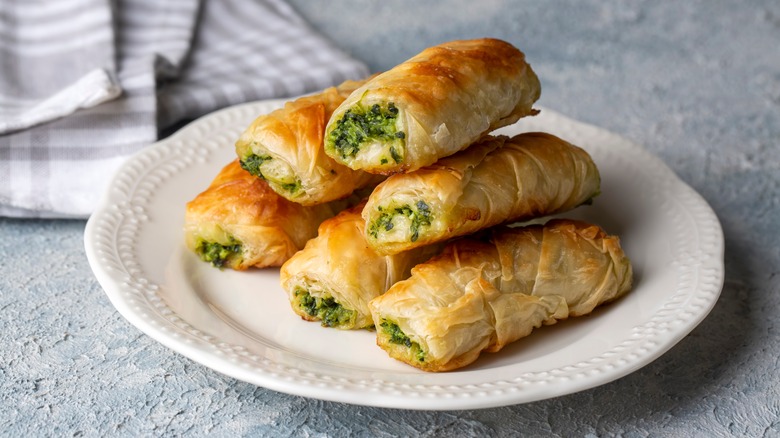Beef Burek: The Crispy Turkish Dish You Should Know
Burek, a savory pastry dish, has a rich history and an expectedly full-bodied flavor.
The dish originated in Turkey, per Taste Atlas, though burek's true origins are admittedly foggy. Burek's rise in popularity is most associated with the culinary advancements during the Ottoman Empire, specifically during the reign of Sultan Mehmet IV in the 17th century, per History Today. Initially known as "borek," the flavorful dish became a staple in the Sultan's extravagant lunches, and its influence quickly spread. However, some documents trace the dish all the way back to the 12th century, and newer research implies it could've been invented by nomadic Turks even hundreds of years before that. Burek now typically correlates to Turkish cuisine, as well as the surrounding areas.
According to Dishes Origins, the term burek likely stems from the Turkish verb "bürmek," which in English would mean to roll or twist.
So now you may be asking yourself, "what exactly is burek, and how in the world do I make it?"
How burek is made
In its simplest form, burek is a savory meat pie, per Taste Atlas. It is typically a flaky filo pastry or slab of yufka, filled with a combination of cheese, meat, and/or vegetables. The Turkish version, beef burek, has a filling mixture of sautéed green peppers, Aleppo peppers, onions, and of course beef, according to Food Network. The dough is slathered in an egg and oil mixture and repeatedly stacked with the beef and vegetable filling between each layer, then baked until crispy. It is topped with black cumin seeds as the finishing touch.
There are many variations of the dish, which is part of what makes Burek so special. It has become a staple and defining dish of Bosnian culture, and Croatia has put its own spin on burek as well. According to Chasing the Donkey, the Croatian version of burek includes a cheese filling consisting of cottage cheese and feta. In Bosnia, the fillings are similar, but the shape of the pastry is typically tubular or in snail-like spiral, per World Food Story.

